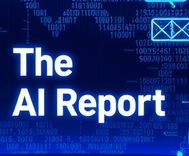Artificial Intelligence on the farm

The AI Report
Daily AI, ML, LLM and agents news
Artificial Intelligence on the Farm: More Than Just a Tech Buzzword
When we talk about "AI" on the farm, it's easy for the mind to wander to the familiar liquid nitrogen tanks holding the future of our livestock herds – artificial insemination. This vital biological tool is about making calves, a hands-on method for genetic selection and herd improvement.
But the other AI – Artificial Intelligence – is about making smart decisions. It's a computer "brain" designed to help solve complex problems and learn from vast amounts of data. One is rooted in biology, the other in technology. While distinct, both are powerful tools shaping modern agriculture.
Artificial Intelligence in agriculture leverages sophisticated algorithms and computing power to tackle long-standing challenges with new approaches.
Practical Applications Boosting Efficiency
Consider the realm of precision agriculture. The integration of AI elevates farming practices from broad applications to incredibly precise interventions. AI systems analyze diverse data streams: soil quality, moisture levels, plant health indicators, and even detailed pest activity reports. This analysis provides farmers with granular insights, dictating precisely where to apply water, fertilizer, or pest control, optimizing resource use and minimizing waste. It's the difference between treating an entire field uniformly and addressing the specific needs of individual zones or even plants.
Modern farms generate staggering amounts of data – numbers related to yield, weather, inputs, and more. AI is uniquely capable of consuming this data and transforming it into actionable intelligence. It can reveal which sections of a field are underperforming, identify patterns leading to disease outbreaks before they become widespread, or even predict optimal harvest timing for maximum crop quality and yield. Algorithms designed for agriculture can create visual heat maps highlighting problem areas or provide data-driven recommendations for critical decisions.
Automation and Robotics
Beyond analysis, AI is increasingly integrated into farm machinery. Autonomous tractors, guided by GPS and sophisticated camera systems, are already operating in fields, performing tasks with precision and consistency. Robotics are also being deployed for labor-intensive tasks like crop picking, equipped with AI vision systems trained to identify ripeness and handle produce gently.
Accessible AI for Farms of All Sizes
The power of AI isn't limited to large operations with massive budgets. Even small and medium-sized Midwestern farms can harness AI to enhance productivity without significant upfront investment. Often, the entry point is through readily available technology – your smartphone. AI-driven mobile applications allow farmers to quickly diagnose crop diseases by analyzing photos, monitor soil health using sensor data or input details, and receive hyper-local, predictive weather alerts that inform critical planting, spraying, and harvesting decisions.
More affordable precision tools, like GPS-guided auto-steer systems for tractors or smart irrigation sensors linked to AI platforms, help reduce overlap and inputs, leading to lower costs and improved yields. These accessible technologies provide tangible benefits, making farming more efficient and sustainable.
Understanding the Human Element
While AI offers incredible capabilities, it's crucial to understand its nature: it is deeply shaped and inherently limited by human influence. From the initial design phase, humans determine what problems AI is built to solve, curate the vast datasets it learns from, and define the rules and parameters guiding its decision-making processes. Every AI model, therefore, carries the imprint of its human creators – their objectives, inherent biases, assumptions, and potential blind spots.
Farmers, agricultural engineers, data scientists, and agronomists all play indispensable roles in training agricultural AI. They teach the system how to recognize a healthy plant versus a diseased one, how to interpret complex weather patterns in relation to crop growth, or how to identify signs of illness in livestock. Even the most advanced AI systems do not possess independent thought or consciousness. They are sophisticated tools, only as effective and reliable as the human-collected data they process and the human-defined logic they follow.
AI: A Powerful Tool, Guided by Experience
Ultimately, AI in agriculture serves to help farmers work faster, more efficiently, and smarter. It provides powerful analytical capabilities and enables automation that can reduce labor and increase precision. However, it does not replace the farmer's expertise, judgment, or deep understanding of their land, livestock, and local conditions. AI reflects and amplifies human decision-making, providing enhanced insights and capabilities that, when combined with decades of farming experience, pave the way for a more productive and resilient agricultural future. The human farmer remains firmly in the driver's seat, using AI as an advanced co-pilot to navigate the complexities of modern farming.

The AI Report
Author bio: Daily AI, ML, LLM and agents news
